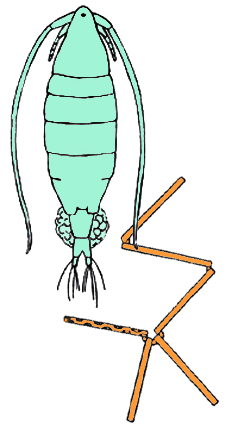August 21st, 2013 § § permalink
Scientific American describes a new model developed at M.I.T.’s Program in Atmospheres, Oceans and Climate. The model tells us that:
If global temperature trends continue, by the end of this century half the population of phytoplankton that existed in any given ocean at the beginning of the century will have disappeared and been replaced by entirely new plankton species.
– Full article by Mark Fischetti.
If only we could get that kind of turnover in Congress, amirite? Ba-dum-dum. Ok, now seriously, it’s the food web we’re talking about.

Background image: NOAA MESA Project
August 7th, 2013 § § permalink

Beebe peeps out from the bathysphere.
In 1934, Otis Barton and Will Beebe set a diving record in a small spherical bathysphere, descending to 3,028 feet. They were pioneers even in today’s context, the first to make direct observations of deep sea wildlife, a realm that remains largely unexplored.
From the small metal orb, Beebe described the appearance of, among many other things, “marine snow”.
Marine snow (also, “sea snow”) is comprised of the falling bits of debris, dead plankton, fecal matter and miscellany that aggregate and sink down into the briny deep. Sea snow delivers the sun energy that is initially captured in the top layers of the ocean (for example, by algae running photosynthesis) into the darkness. This is a prime mechanism of “vertical transport” that sustains deep-sea consumers who might never see the light of day.
Today, scientists attempt to quantify and characterize the snow, as well as the branches of the food web that graze upon it.
July 2nd, 2013 § § permalink
Found in a junk store in New Bedford, MA… Album of Whales (1980) by Tom McGowen, with great illustrations by Rod Ruth of baleen-bearing beasts basking on plankton.

When humpback whales like this guy above are not hunting herring, they crave krill and other plankton.

Right whales were hunted early and often by humans, due in part to their surface feeding habit of “skimming” for zooplankton.
Baleen feeding whales essentially scoop up a huge volume of seawater and then expel it through their baleen “teeth” with their mouths closed. Krill and other treats like copepods stay in the mouth. To me its just a trip that these enormous animals can get enough tiny bits (billions of plankton per day) to satisfy the appetite.




